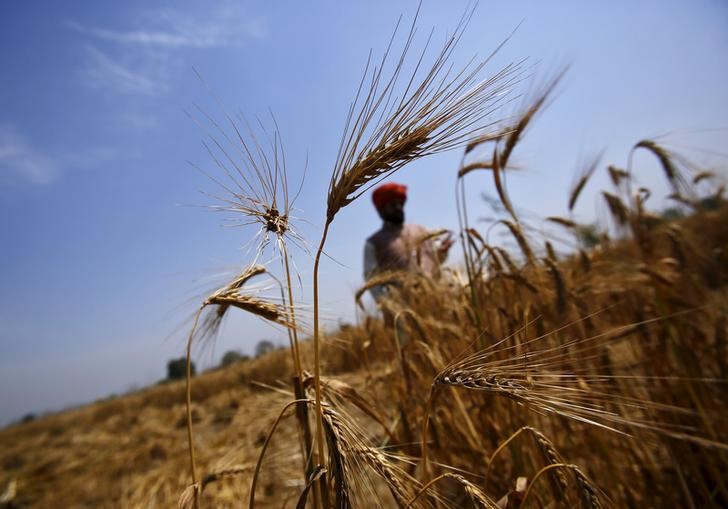By Mayank Bhardwaj
NEW DELHI, Jan 13 (Reuters) - India's wheat output is expected to fall for a second straight year in 2016 after a series of bumper harvests since 2007 due to an unusually warm winter in central and northern India.
India, the world's second-biggest wheat producer, will likely weather the storm as it is sitting on surplus stocks. But lower wheat output will deepen the crisis in the countryside where adverse weather conditions have been a bane of late.
Despite last year's lower output, the crisis has remained confined to farms but any further damage to the crop could start pinching the public if state stocks get drawn down.
In 2015 untimely hail and rains during harvest cut output to 88.94 million tonnes from 91.50 million tonnes a year earlier.
"We are observing higher than normal temperatures in most parts of the country, including central and northern India, where wheat is the main crop," Indu Sharma, chief of state-run Directorate of Wheat Research, told Reuters by phone from the northern city of Karnal, a wheat belt.
If higher temperatures are going to imperil the crop yield, yellow pest infestation has come as a double whammy.
"We've asked farmers to spray fungicide but there are chances that the pest infestation will spread to more areas in Punjab, Haryana and Himachal," Sharma said referring to the key wheat producing states of northern India.
Wheat planting began on a slow note after two successive droughts. A lag in wheat planting typically leads to lower yields. lack of moisture in the soil, the absence of spring rains and higher temperatures couldn't have happened at a worse time. At the moment we see our production at 87-88 million tonnes," said Sharma.
So far the worry was the fall in the area planted with the crop but dry weather conditions have now come as the second hurdle, she said.
Provisional estimates suggest farmers have so far planted wheat on 28.17 million hectares, nearly 6 percent lower than the previous year.
Farm Ministry officials say wheat acreage is likely to drop by a million hectares against an average area of 30 million hectares.
"We'll have to keep our fingers crossed and pray that temperatures don't go up any further in February and March when the crop is ready for harvest lest production could fall below our estimates," Sharma said.
The one redeeming feature is the grain bins brimming with 23.8 million tonnes of wheat against a government target of 13.80 million tonnes.
